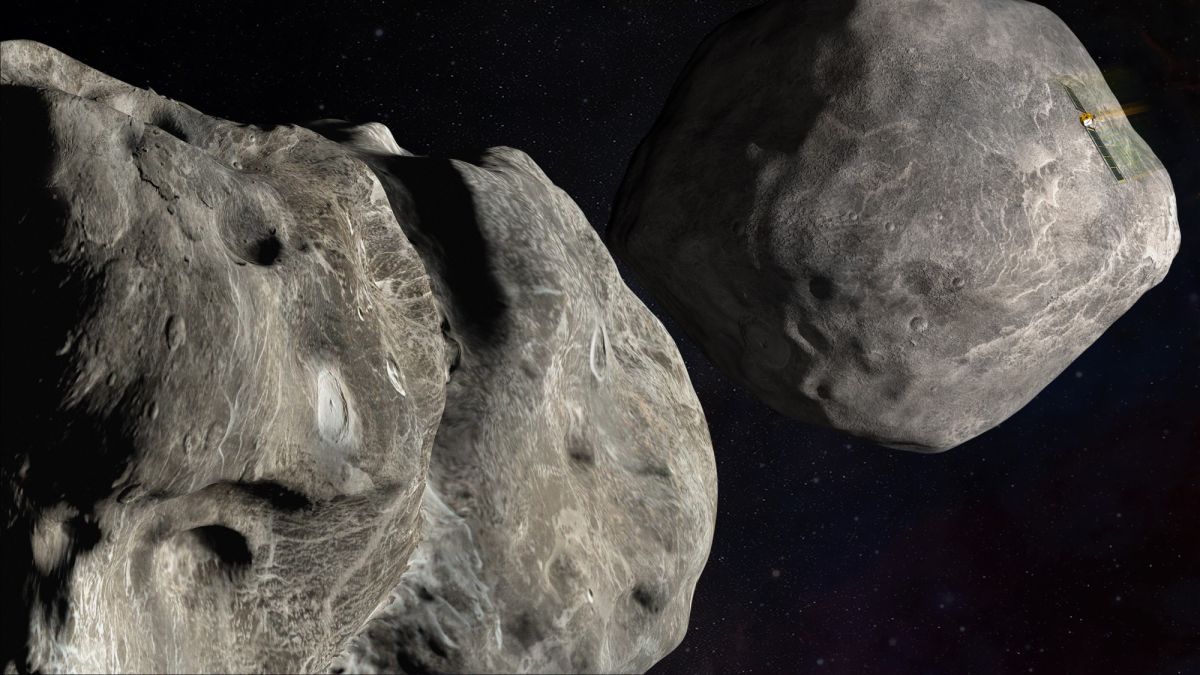
www.space.com
James Webb, Hubble space telescopes will try to watch DART asteroid impact
Three eyes in the sky will attempt to watch the DART mission impact asteroid Dimorphos: the James Webb and Hubble space telescopes and another NASA asteroid mission, Lucy.
Science & Tech
When NASA's DART mission slams itself into an asteroid called Dimorphos next week, three different science spacecraft will be trying to watch the action.
The Double Asteroid Redirection Test (DART) mission is designed to test a planetary defense technique that could be put to use if humans discover a large asteroid on a collision course with Earth. The spacecraft carried with it a tiny cubesat to document its dramatic end, but three other eyes in the sky will also attempt to watch the impact: the James Webb and Hubble space telescopes and another NASA asteroid mission, Lucy.
"This is a unique opportunity and a unique moment to take all the resources that we possibly can to maximize what we've learned," Nancy Chabot, a planetary scientist at Johns Hopkins University Applied Physics Laboratory in Baltimore and the coordination lead for DART, said during a news conference held on Sept. 12.
DART launched in November 2021, bound for a binary asteroid system anchored by the larger Didymos, which a moonlet called Dimorphos orbits every 11 hours and 55 minutes. On Monday (Sept. 26), DART will test a technique called kinetic impact, a fancy term for slamming something large enough and fast enough into an asteroid to nudge its orbit.
Scientists want to observe a known impact event to understand how a future planetary defense mission might unfold, should humans want to deflect an asteroid headed toward colliding with Earth. (Neither Didymos nor Dimorphos poses an impact threat to Earth, and nothing that happens on Monday can change that, DART team members stress.)
Mission personnel hope to see images of the impact site just three minutes after launch, thanks to the tiny cubesat, LICIA Cube, that DART deployed earlier this month; the European Space Agency will also send a separate mission, Hera, to study the site in detail beginning in late 2026.
But a live view of the moment of impact itself from a telescope in space, unhindered by the blur of Earth's atmosphere, would certainly be a nice bonus. So NASA will turn the veteran Hubble Space Telescope and the James Webb Space Telescope (JWST), which just began operations this summer, to try to catch DART's impact, which will occur at 7:14 p.m. EDT (2314 GMT).
How good these space-based observations turn out to be is still unknown. "Let me just stress here, this is not what JWST is designed to do; this is a challenging measurement for them," Chabot said. Dimorphos is much closer and moves much faster than the distant galaxies at the heart of JWST's work. "They will be looking; we'll see what they get."
























































